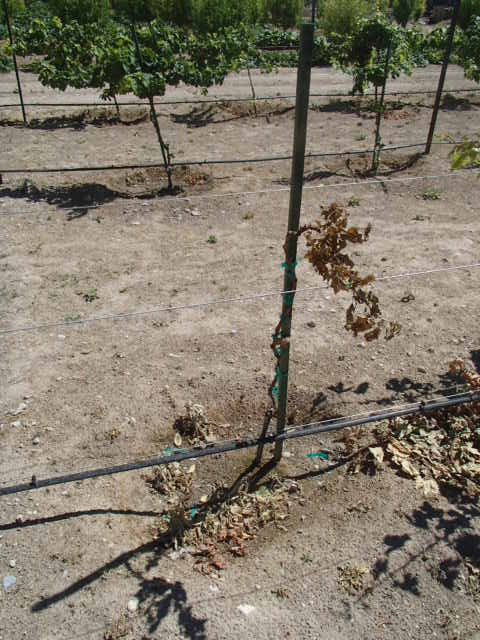Q. Two years ago I had grape bunches that were shriveling up in the middle of summer while they were still green. I think it was a disease, but it spread and killed off nearly all my grape bunches. How can I prevent this in the future?

Grape diseases can be divided into two main groups; those that attack the fruit and those that attack the vines. This is a bunch rot disease of grapes in Las Vegas. The link is only for Botrytis bunchrot disease. There are several kinds.
A. Grapes don’t typically get borers, but they can get diseases that attack the bunches or young stems. Another disease attacks the new growth. The other problem commonly found on grapes growing in the desert is damage from our intense sunlight.
This was unofficially diagnosed as Eutypa disease on table grapes, a trunk disease of grapes.
The most common diseases of grape bunches
are the so-called powdery and downy mildews. You will not see them, but the
disease is flourishing, invisible, right under your nose. This might be a
problem later with grapes when there is snow or rain falling on the new growing
vines in the spring. It will cause the bunches, all of a sudden, to die green.
During February and March, hope for dry
weather when grapes are first starting to grow. If this kind of weather is
present then, it’s a good idea to spray a fungicide two or three times during
the growing season to prevent bunch diseases like these from becoming a
problem. Spray the first dose when bunches are small to protect them from
infection. The usual fungicides for homeowners are copper fungicides like
Bordeaux. And for heaven sakes, when you are pruning, sanitize your pruning
shears
Damage to the bunches or older stems from
intense sunlight is not a big problem if grape stems and fruit are grown in the
shade of their own leaves.
About the only chemical protectants you can spray as a homeowner are the copper based fungicides, Bordeaux probably leading the group. Remember, fungicides like Bordeaux are protectants and much more effective at protecting new growth from infections. Watch for wet or rainy weather during new growth. If this happens, it is much more likely a disease will occur. Spray with Bordeaux mix after new growth has started and then again as the berries start to enlarge.















